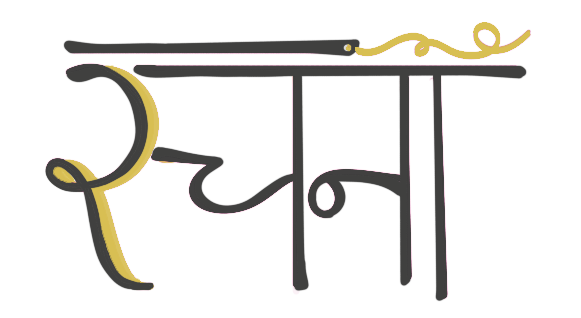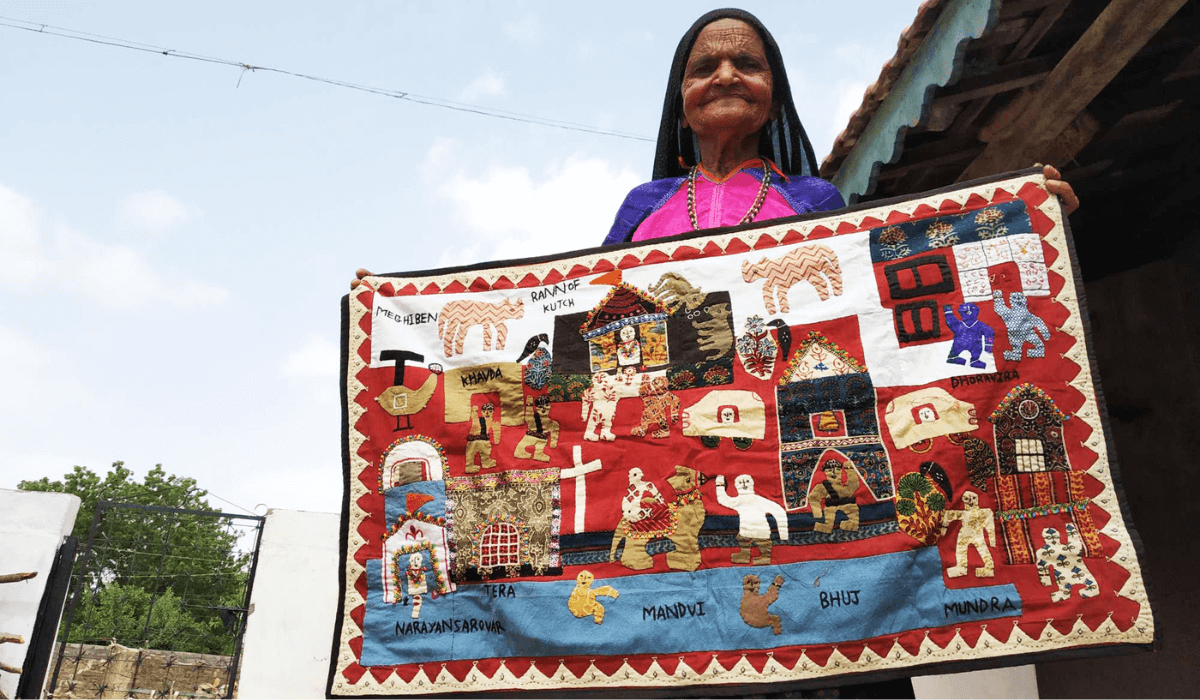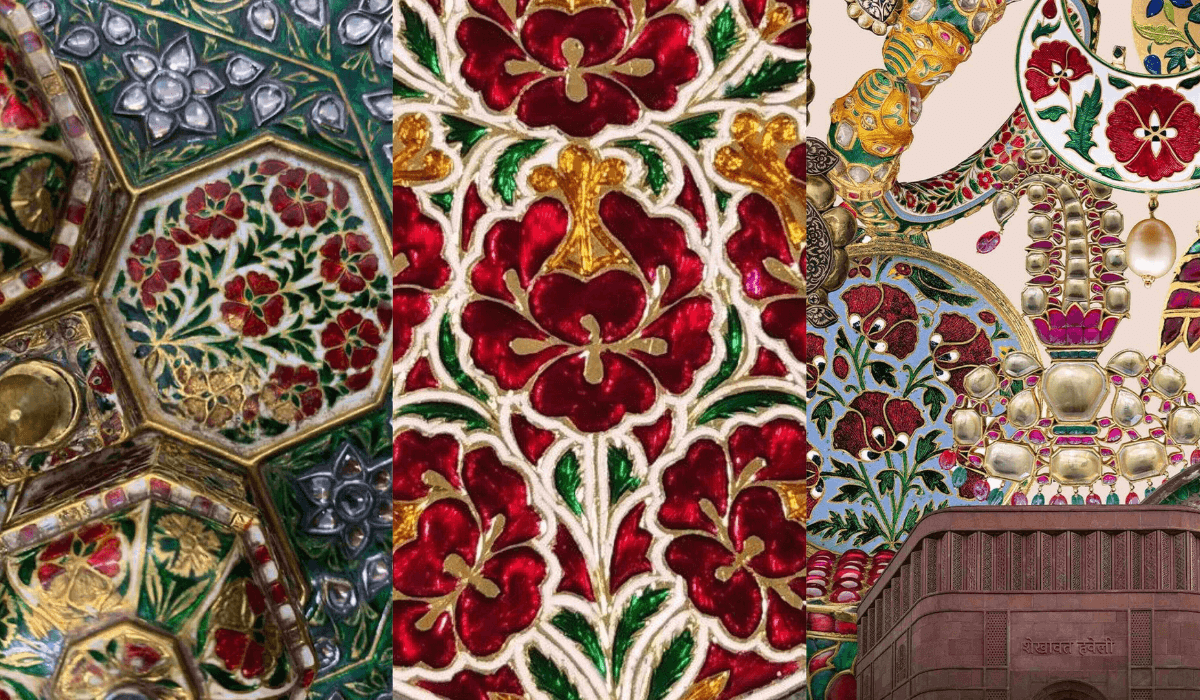
Imagine owning an heirloom or buying a garment nothing short of ancestral magic. When you wear it, you get carried to faraway places. One such magical craft is Meenakari. It originated in Persia hundreds of years ago, and made its way to India with the Mughal Emperors. Today Meenakari is majorly produced in Afghanistan, India, Iran and Pakistan. In India, Meenakari has flourished especially in Rajasthan and Gujarat. Born as an intricate art form used to make jewellery ,we can today see it on ceilings (especially of the Mughal Era), walls, vases, dishes, containers, and clothes among others.
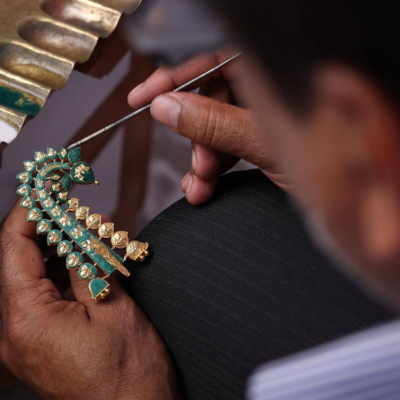
What is Meenakari all about?
At its heart, Meenakari is the art of enameling- the process of fusing brilliant colours onto metal surfaces. The word Meenakari is a combination of two smaller words. First one Mina, which comes from the word Minu. Minu means paradise or heaven often depicted as celestial blue. Blue is in-fact the most prominent colour in traditional Meenakari work, symbolizing Divinity. The second part of the word is Kari, which means to do, or to place something onto another. So the word Meenakari literally translates into placing heaven on an object.
Understanding the Craft-form at Length
Meenakari is not just a work involving vibrant colours. It also involves how the light interacts with the polished enamel, giving it a beholding luminescence. It is an art and craft form that thrives on patience, precision and deep understanding of materials.
It involves working with a base metal, which traditionally was gold, silver or copper. The metal surface is intricately engraved with motifs.These engraved grooves or ‘Khakaas’ serve as partitions, ready to hold enamel. Next, the enamel itself is made out of crushed glass. With a lot of detailing and patience it is applied to the depressions in the metal. Each colour is applied individually, starting with the colour that can withstand the highest temperature.
The piece is then placed into a high temperature kiln. The enamel melts and fuses with the metal surfaces, giving it a glossy, smooth and vibrant finish. This process is repeated for each subsequent colour. The artisans control the temperature in the kiln and the duration, to prevent the previous layers from damaging. The final step involves polishing and outlining the colours intricately with gold or silver lining to accentuate the colours.
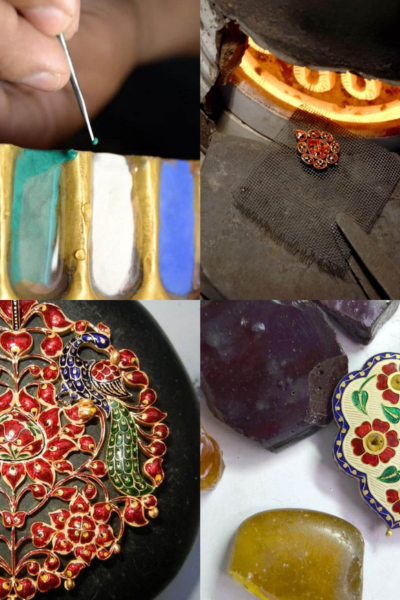
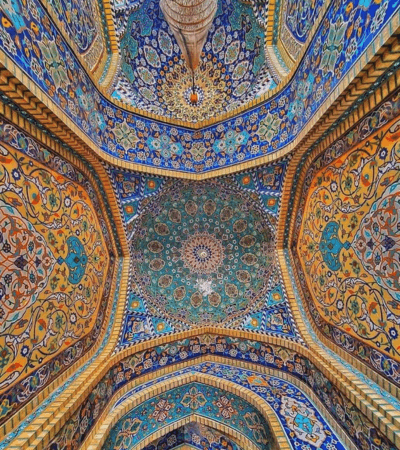
Origin and whereabouts of Meenakari work
Persian Legacy:
Origin of enamel work can be traced back to Egypt long before any other place. But the intricate and detailed craft-form that Meenakari is known to be, is believed to have originated in Persia, today known as Iran. Persian artists were experts at this art creating breathtaking pieces for the royals and elite. At that time techniques mostly involved fusing vibrant mineral oxides onto metal surfaces. Primarily gold was used to create intricate designs inspired by nature. This art-form at that time often refined the Persian courts and was predominantly defined by opulent and aesthetic shades of blue and green.
Journey to India:
The Mughal Empire is largely accredited for Meenakari’s arrival in India. It is believed that specifically during the reign of Akbar during the 16th century, Meenakari artisans were brought from Persia to Mughal courts in India. They were expected to make exquisite ornaments, embellish weaponry and decorative items. Lahore, which was at that time a part of India, is where this work flourished.
Raja Man Singh I recognized the beauty and eloquence of this craft. After his Lahore visit, Raja got with him skilled Meenakari artists and settled them in the city of Jaipur. The dry landscape and vibrant culture of Rajasthan made it possible for the art-form to flourish here. Local artisans were quick to learn this craft and imbue distinct Indian motifs and richer colour palette. The artisans here have passed on the craft through generations. New techniques, styles and changing needs have resulted in the craft evolving over time. But the essence remains the same as it was centuries ago
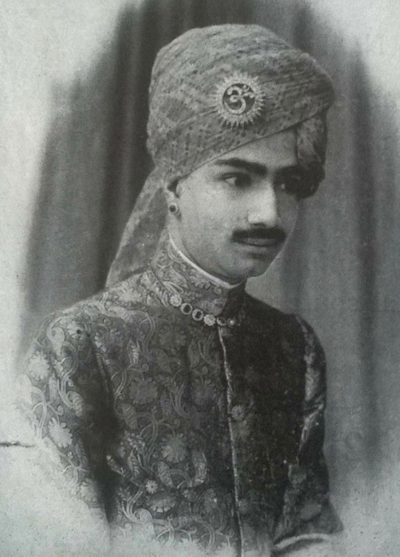
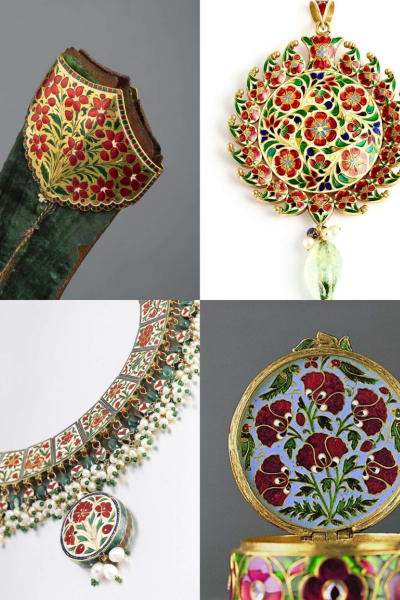
Uses Of Meenakari- Beyond Adornment
While Meenakari is most commonly associated with jewellery, its application extends far and beyond adornment.
Jewellery- The reverse side of Kundan-kari work is often adorned with detailed Meenakari work. It is a burst of colours, detailing and artistry, known only to the wearer. Often found in earrings, neck pieces, rings, bridal jewellery, etc. Meenakari holds a prominent place in the jewellery business today.
Decorative utensils and Cutlery- Royal households in the past used Meenakari in their cutlery showcasing their appreciation for the craft form and their royalty.
Weapons and Armours- Just like cutlery, royals believed to convert items of war into things of beauty. This was also done to flare their royalty.
Meenakari in the World of Fashion and Garments- In the fashion and garment industry Meenakari work is found in embellishments, borders, necklines, statement closures such as buckles and buttons etc.
Conclusion
The craft of Meenakari offers endless possibilities. It has a strong history and presence. Because of its evolving nature, it is expected to stay with mankind for many centuries to come. Its stunning pieces made of complex techniques and vibrant colours can be both modern and traditional.
In the world of fashion, Meenakari work stands out in a sea of beautiful traditional Indian crafts. Each piece has a story to tell, of the passion of the artisan and of the love of the wearer. It carries the weight of centuries old artistic tradition and holds infinite depth and meaning.
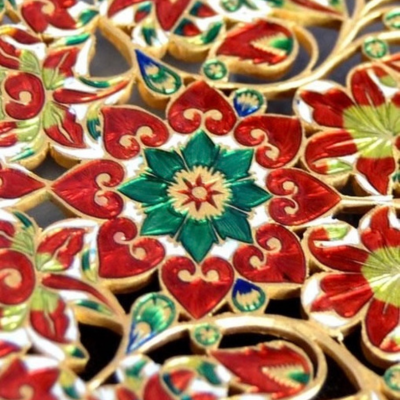
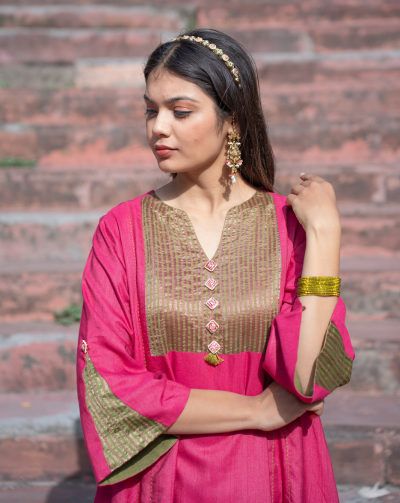
SADHNA : A STORY OF DIVINE HARMONY
At Rachnaa you will find a beautiful amalgamation of detailed pieces with several craft-forms and a myriad of culture. We have dived into working with the craft of Meenakari with our collection SADHNA. Sadhna marries modern day elegance with timeless craftsmanship. It is designed as a rich fusion of various Indian textiles, hand-embroidery techniques, intricate detailing and custom made Meenakari buttons hand-made by Meenakari artisans from Jaipur.
Check out collection here : https://rachnaa.co.in/product-category/sadhna/
